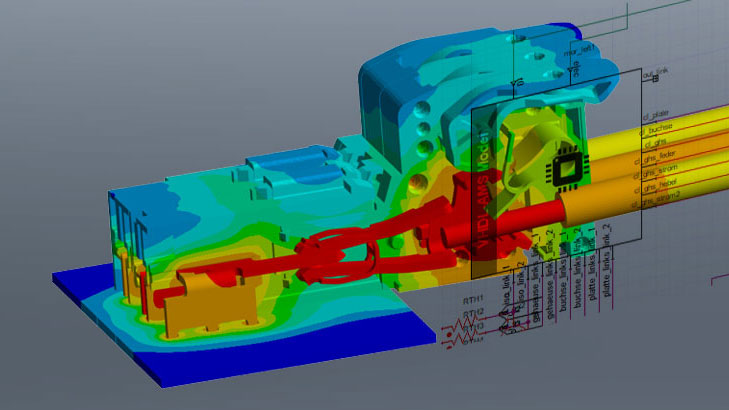Simplifying Simulation: Interview with Dr. Prith Banerjee
Joël Grognuz
16.07.2024
The Ansys Grand Vision of Simulation: Interview with Dr Prith Banerjee, Part 3
In part 3 of the interview with Dr Prith Banerjee, you will learn all about the Grand Vision of simulation from Ansys: Simplifying simulation, broadening the usage of simulation, and empowering users. One example: Simulation in Healthcare and Human Digital Twins.
Keyword "SaaS": The entire simulation technology seems to be shifting further and further towards the users, so that an even wider audience can utilise simulation technology. Is this already happening now or will it happen in the near future?
Ansys has a grand vision, which our CEO Ajei Gopal has shared in our investor deck. It's called "pervasive insight," and it envisions a significant shift. Currently, only a small percentage of engineers in a company can use Ansys simulation because it typically requires specialized knowledge. For example, you might need a PhD in electrical engineering to effectively use HFSS or a PhD in aerospace engineering for Fluent. But this is going to change!
Ansys is working on democratizing simulation, where not just 5% of engineers, but all engineers, can use simulation. We're essentially simplifying the process. We're creating Python interfaces to all our solvers and allowing customers to build workflows. For instance, when designing an electric car, you could start with a requirement and then use Maxwell to choose the motor size, Fluent for the battery system, Ansys Mechanical for the powertrain, another tool for power electronics, and so on.
Soon, these tools are connected in a workflow using Ansys, and the solvers can run on-premises or on the cloud. Ultimately, users will interact with these workflows like apps on their iPhones. We envision a future where the design of products is greatly simplified, allowing anyone, including non-engineers, to use simulation. This vision of pervasive insight is what we're working towards with our cloud and platform efforts.
Ansys is working on democratizing simulation, where all engineers can use simulation.
Do you have any examples for us?
Today, in the healthcare industry, as people come up with new medical devices or a new drug, they use the concept of clinical trials. That means they will come up with a new device, and they will first test it on a monkey, then on a donkey, and so on. And it takes a long time to do those clinical trials. For example, when the COVID vaccine was invented, it took one month for this mRNA-based vaccine to be developed by Moderna. It took one year to get the clinical trials right.
We have the vision that with simulation technologies, we can do what is called in silico trials. So, we'll simulate 5,000 human patients, all on a computer. You don't have to test it on 5,000 actual humans. We will create 5,000 different models: female, male, slim female, obese males, and so on. Some males with heart disease, some with high blood pressure.
All kinds of scenarios will be there. And when you bring in a new medical device or a new drug, it will be tested through in silico trials. Once that vision is done, it will transform the area of healthcare. We are working on digital twins of the human body, and that is going to totally transform the healthcare industry.
Read more: Prith Banerjee on Using Artificial Intelligence in Ansys Simulation
Watch now the full interview with Prith Banerjee on our YouTube channel!




